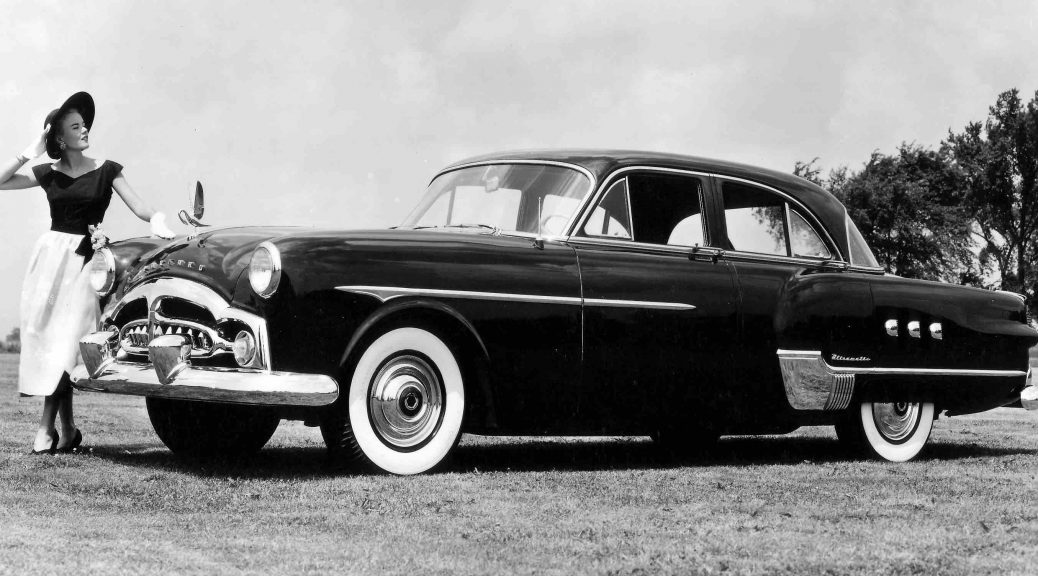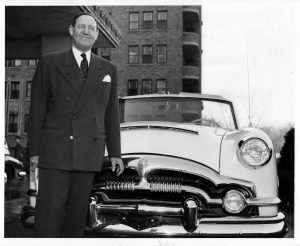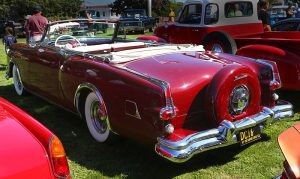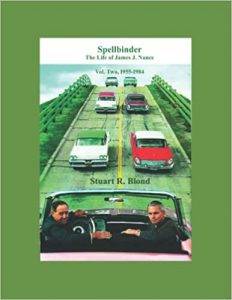
Why Packard Failed (1): Patrician and Its Relatives 1951-53
The song had ended, but the melody lingered 0n
“Patrician and Its Relatives” first appeared in Collectible Automobile, December 2021.
“Packard is back and cooking,” wrote Tom McCahill, irrepressible road tester wrote for Mechanix Illustrated. “These are good automobiles, big, fast and capable…they also have a touch of that old glamour that the big, open Eights had in the Twenties, when I was in college owning a fifty-dollar crate and dreaming that someday I’d have a Packard.”
It was a nice accolade, typical of “Uncle Tom’s” loquacious boosterism. He wasn’t alone in hoping Packard’s first all-new postwar redesign heralded a revival. Only two decades before, Packard had reigned as the car of choice for those who had “made it”—a very visible declaration of what their owners thought of themselves, and wanted the rest of us to think of them also. Why not again?
Yet even McCahill admitted only to “a touch” of the old allure, and a touch was not wholly satisfying. In reality, though no one knew it, the 1951 Packards began the long wake for America’s once-dominant luxury brand. Sporadically through 1956, Packard would lurch back toward past glory. But the damage was already done, and its efforts would prove too little, too late.
Early errors
In Packard: A History of the Motorcar and the Company, George Hamlin and Dwight Heinmuller defined the problem. By the late Thirties, they wrote, technology had revolutionized the industry: “The day when you could buy a Packard and be guaranteed to go farther, faster, quieter than anyone in a car costing half or even a third as much had simply vanished. This was of course true for Lincoln and Cadillac too. But the difference, insofar as the success of the product was concerned, would be measured in each company’s salesmanship.”
Blurring the distinctions between luxury models and what Packard called “juniors” was not good salesmanship, Hamlin and Heinmuller added. By 1937, the gap between top and bottom “did not approximate the traditional company pricing norm, and the gap had been closed principally by the higher-priced cars moving downward rather than the lower-priced ones moving up.” In 1946, for example, that gap had closed to $3000 ($32,000 in today’s money). In 1951 it was barely $1000.
1951: Thinning out “that goddam senior stuff”
There was nothing particularly wrong with chief designer Johnnie Reinhart’s “Contour Styled” ’51s, though he regretted their high beltline and had wanted more glass. Yet Reinhart brought the fenders up even with the hood and deck before most of the industry. Mechanically, Packard’s nine-main-bearing 327 straight eight was soundly engineered, and Ultramatic, its homegrown automatic, one of Detroit’s finest. The problem, for those who yearned for the Packards of their youth, was—well—everything else: It was no longer clear how the company viewed itself, or how the public viewed the company.
“Nothing happens until somebody sells something,” proclaimed Jim Nance, destined to be Packard’s president from mid-1952. But since the 1930s Depression, when Packard had moved sharply down-market with the One Twenty and Six, selling something had proven tricky. The 1935 One Twenty—a cheap Packard, but hardly a cheap car—had saved the firm from bankruptcy. The rather cheaper 1937 Six, priced to garner even more sales, was arguably a step too far from tradition. Since then, Packard had not built much of what one manager called “that goddam senior stuff,” and by 1951 that stuff had almost disappeared.
Incredibly for 1951, Packard offered only one true luxury car: the 127-inch wheelbase Patrician 400 (“400” was dropped later) at $3600. With a nine-main-bearing 327 cubic inch straight eight, it was trimmed with Wilton carpets, color-coordinated broadcloth and footrests for rear seat passengers. Smooth and solid on the road, if no jackrabbit with standard Ultramatic, it was available only as a four-door sedan, at once the most popular and least exciting of body styles.
Patrician versus Cadillac
And the Patrician was cheapened: the preceding Custom Eight’s velvety “Mosstred” carpets, Marshall coil springs, profuse woodgraining and glittery dash were all gone. So too in mid-year were cloisonné wheel cover medallions. Gone too was the legendary 356 straight eight, although there were sound reasons for this: the 327 had higher compression, comparable smoothness and a better power-to-weight ratio. Nevertheless, like the collapsing price gap between Packard models, there were now only 39 cubic inches between a plebeian 200 and the top of the line.
Against the Patrician, rival Cadillac arrayed its hot-selling Sixty-two sedan, convertible and two hardtops including the swank Coupe de Ville. Packard sold 9001 Patricians, Cadillac over 80,000 Sixty-twos, a third of which were hardtops or convertibles. Cadillac also built 16,000 long-wheelbase Sixty Special sedans. Packard had nothing comparable.
Another so-called senior Packard was the 300, an austere four-door with the five-main 327, supposed successor to the famous Super Eight. Its drab interior hardly proclaimed luxury. While Cadillac was abandoning its lowest-priced Sixty-one, the 300 soldiered on, by no stretch a luxury Packard. There were also a few 1951 commercial chassis, but only to 300 spec, with no long-wheelbase variants. Cadillac had that small but lucrative market almost to itself, building over 5000 long sedans and extra-long commercial chassis.
The ’51 line did offer a hardtop, the Mayfair, and a convertible, at $3200-3400. By Packard’s definition they were junior cars, riding a 122-inch wheelbase, albeit powered by a five-main 327. Their competitors were Oldsmobile and DeSoto. Cadillac’s sporty two-door models sold for $500 more, carried modern overhead valve V-8s and outsold the Packards five to one. The lack of an up-market hardtop would continue to hurt.
1952: Big Jim and the quest for relevance
James J. Nance had not been Packard’s first choice in its search for new, dynamic leadership. Still, Nance’s reputation augured well. He had turned General Electric’s Hotpoint into a best-selling appliance brand. His whose tenure at Packard was highly anticipated. GE bought 25,000 shares of Packard stock—“the kind of compliment that counts,” Fortune wrote.

Packard got Nance as part of a larger, behind-the-scenes deal. As he told George Hamlin and this writer in 1976: “I wouldn’t have gone into it just to take over Packard.” Nash’s George Mason, a visionary among his peers, was planning to merge Nash, Hudson, Packard and Studebaker. His role, Nance said, was “to bring in Studebaker,” while Mason acquired Hudson, “then fold all four into what George was already calling American Motors.” This explains how Nance saw Packard: a luxury division competing with Cadillac, leaving the goddam junior stuff to other makes.
Nance’s explanation has been challenged by subordinate AMC figures, but they weren’t present in plenary discussions. Hamlin and I had no reason to believe that Nance fabricated the story. It fits George Mason’s mindset.
Nance had his work cut out. The 1952 Packard line was no more luxurious than 1951, with the same array of mostly middle-priced models, the Patrician, 300, and a few commercial chassis. Sales were down by 14,000 units. Job one was sales, and that was Nance’s specialty.
Nance specialized in stem-winding speeches reminiscent of a country parson. Buyers over 40, he thundered, “still think of Packard as a quality car…. But to the younger person of say 35, Packard doesn’t stand for anything…. Ask what Cadillac stands for, and every kid on the curbstone can tell you. ‘That’s the best, mister.’” Packard was “getting a miserable 3.5%” of the luxury car business, Nance fumed: “I’ll be damned if I’m going to be in a horse race and get left at the quarter pole.”
1953: pursuit of luxury

The opulent Packards once mocked by 1930s management now seemed poised for a comeback. For 1953 Nance moved quickly to separate luxury from middle-priced models in the public mind. Gone was the 200-300-400 nomenclature. Juniors were now Packard Clippers, reviving a model name from 1947. The Mayfair and convertible, still neither fish nor fowl, at least benefitted from reflected glory in the new Packard Caribbean, a $5300 convertible inspired by the Pan American showcar.
Stylist Dick Teague developed the Caribbean’s special features: fully radiused rear wheel cutouts, senior taillights, a hood scoop, wire spoke wheels, a “continental” spare tire and minimal brightwork. Specifications were no different from the standard convertible, but as a prestige line-leader, it was a good job, built up from convertibles by Mitchell-Bentley in Ionia, Michigan. Sales were 750, double those of Cadillac’s $7700 prestige-leading Eldorado. Given Nance’s resources, it was a worthy assault on his rival. But it still rode the 122-inch wheelbase, and even Ultramatic was optional.
Deploring Packard’s loss of the high-price business, Nance decreed a comeback with three new luxury ’53s. They comprised a Derham-bodied formal sedan, and a brace of long-wheelbase models built by Henney. The eight-passenger “Corporation limousine” and “Executive sedan” sold for $2000 more than Cadillac’s 75 counterparts. The Derham, with its padded top and oval backlight, was Packard’s first custom body since 1942. The limo and Executive were the first long-wheelbase bodies catalogued since 1949.
“America’s New Choice in Fine Cars”
The slogan for 1953 was proclaimed with suitable fanfare and Nance-driven improvements. Four barrel carburetion boosted horsepower. Power steering (Packard’s own) joined 1952’s power brakes. Air conditioning, which Packard had pioneered before the war, was back on the option list. Nance himself came up with the “three-way radio” (manual, pushbutton and selector bar tuning). Fascinated by the idea, he’d contacted GM Delco, finding they had one ready to go. He made a supply deal, and had it in Packards five months before Cadillac: a nice jump on the opposition.
One couldn’t argue with success, and most stockholders didn’t. The new luxury models sold sparingly, but that they were there at all was testimonial to Nance’s determination. Advertising assumed a decided up-market look, and the results were agreeable. Calendar ’53 saw 81,000 cars, up by a third and the best since 1950. Packard’s share of the luxury market increased, and pre-tax profits at $10 million were the highest in history. It began to look like things were turning around.
Concluded in Part 2 (1954-56)
Further reading
“The Packard—Ne Plus Ultra of Automotive House Organs” (in two parts), 2021
“Packard Tales and Memories of Bud Juneau,” 2021
“Why Studebaker Failed: In the End, It is Always Management,” 2020
“Dutch Darrin, Part 2: The Packard Adventures,” 2017
Spellbinder: The Life of James Nance, by Stuart Blond
 The most comprehensive account of Nance’s tenure at Packard is in Stuart Blond’s new two-volume biography, which is strongly recommended for car enthusiasts old and new. Stuart, my successor as editor of The Packard Cormorant, has constructed a fastidious account of a Horatio Alger story, and how Nance ended up at Packard with the toughest challenge of his career.
The most comprehensive account of Nance’s tenure at Packard is in Stuart Blond’s new two-volume biography, which is strongly recommended for car enthusiasts old and new. Stuart, my successor as editor of The Packard Cormorant, has constructed a fastidious account of a Horatio Alger story, and how Nance ended up at Packard with the toughest challenge of his career.







2 thoughts on “Why Packard Failed (1): Patrician and Its Relatives 1951-53”
Richard – thanks for sharing your informed perspective and for creating this site.
Setting aside the “Big 4th” scenario, I find very thought-provoking the question of whether an Independent could have survived on their own in the 50s and 60s. The argument that it was impossible due to lack of scale was disproven by Beetle, Rambler, Mercedes-Benz and others. Perhaps what those who argue “impossible” are really saying is that it was impossible to compete model-for-model with the Big 3. On this I agree. Small players needed to make do with fewer cars – and needed to make those cars stand-outs that achieved good scale in the segments that they competed in.
In this light, the 1951 Packard “24th Series” is a fascinating program to analyze and poke at. The clay models for its lead vehicles – the ‘200’ 2 and 4-door sedans – were not finalized until October 1949. Therefore, Packard had the benefit of seeing what Buick and Cadillac would sell in the next several years, and how the market initially reacted to them.
Had Packard carefully tracked competitive sales it would have discovered that the long wheelbase Buick 52 & 72 and Cadillac 62 sedans were selling incredibly well despite their higher prices relative to the shorter-wheelbase sedans selling alongside them. The market was signaling its preference for rear seat spaciousness!
Given this reality, very late in 1949 one can make an argument that Packard should have made a last-minute pivot and gone all-in on the 127 chassis. To hold the 200’s August 1950 launch date (Packard’s financials were falling apart due to the slow-selling 1950 models) the 200’s design could have been retained, with only its front and rear doors being lengthened by 2.5 inches to stretch its wheelbase from 122 to 127 inches. At this point, the 2-door Club Sedan would have been dropped.
Had Packard taken these actions they would have ended up with a car similar to the original Clipper in its ability to be dressed up or down depending on interior trim and engineering specs. In base form it probably would have retailed for no more than $50-100 more than the original 122 wheelbase sedan, and in Patrician trim it would have been priced between Buick 72 and Cadillac 62, rather than above 62 as the Patrician 400 had. I like the marriage of the 200’s more rounded rear fenders and vertical taillights to the rest of the car’s tall and rounded forms, particularly its windshield and backlight.
If one were to add up the body tooling cost for the 24th Series – three roofs, two front door sets, two rear doors sets (with sharing of door outer stampings), three rear fender sets, three side glass/door frame sets, two decklids, two windshields, three backlights – it would roughly amount to the equivalent of two bodies.
This being the case, Packard would have had money to tool a second body, the only caveat being that it would have needed to sell well. Not at the same volumes as the tall 127 sedan but definitely at or above 10,000 units per year, else Packard would never recoup its investment. I think this model would have been Packard’s big opportunity to really stick it to Cadillac.
A marginally practical 127 wheelbase 4-door car with style-forward design including a hardtop roof (fixed and removable post versions), 3-piece open and one-piece formal backlight options, 300/Patrician 400 “bulls nuts” taillights, and elimination of “High Pockets.” Think 1924 Packard Sport Model with 2-inch sectioned body. Lower than Hudson, it would have thrown Cadillac off balance.
High-priced specialty models largely based on existing stampings and created with lots of body shop work could have included a 149 wheelbase 8-passenger sedan and EDL and a 122 wheelbase 4-passenger Speedster, plus a few 149 wheelbase Dual-Cowl Sport Phaetons for the parade circuit.
A primary goal of the 54th Series would have been to quickly make enough money to tool the V8 for 1953 as had originally been planned, and to profit even in the Korean War volume-constrained 1952 model year.
RML nailed the demise of Packard in one word, “the gap”. “The Gap” got others also, Oldsmobile, DeSoto, Mercury, ETC. The key perhaps was the 51 models, if the lineup was more like the 53’s Packard may have faired better.
Comments are closed.